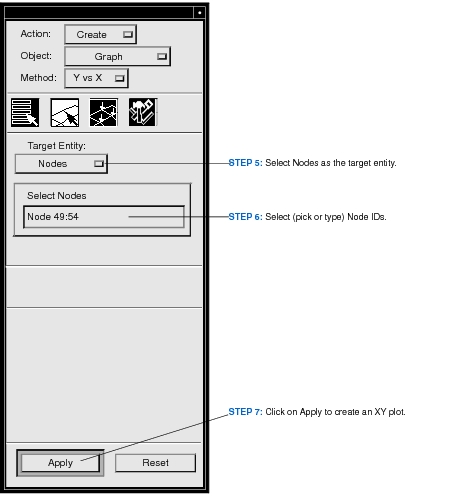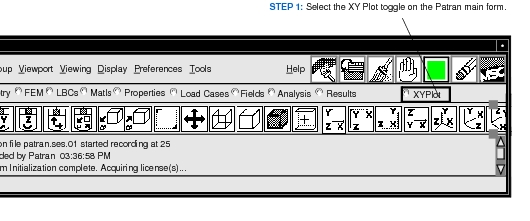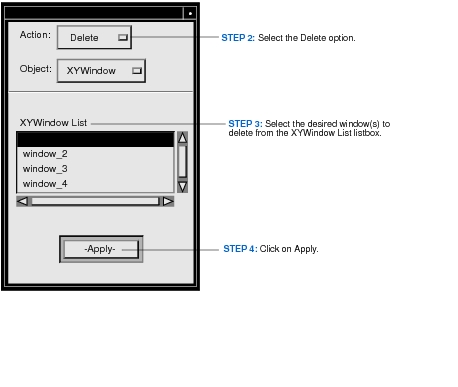XXXXXXXXXXXXXXXXXXXXXXXXXXXXXXXXXXXXXXXXXXXXXXXXXXXXXXXXXXXXXXXXXXXXXXXXXXXXXXXXXXXXXXXXXXXXXXXXXXXXXXXXXXXXXXXXXXXXXXXXXXXXXXXXXXXXXXXXXXXXXXXXXXXXXXXX''"> 5.3 Results Visualization Options
The Results or XY Plot toggle, located on the Patran application selections, may be chosen to visualize thermal analysis results. The Results application displays contour plots and XY plots that can be sorted or grouped by various kinds of variables. The XY Plot application creates and manages the definitions of XY windows, curves, and titles. It also manages the display of XY plot information.
The following pages describe how to process basic thermal results. For more information on postprocessing results, see
Postprocessing Results and
XY Plotting.
Contour Plots
Thermal contours can be plotted using the Quick Plot object (default) selected from the Results application. If advanced features or XY plots are desired, the Fringe or Graph object must be used.
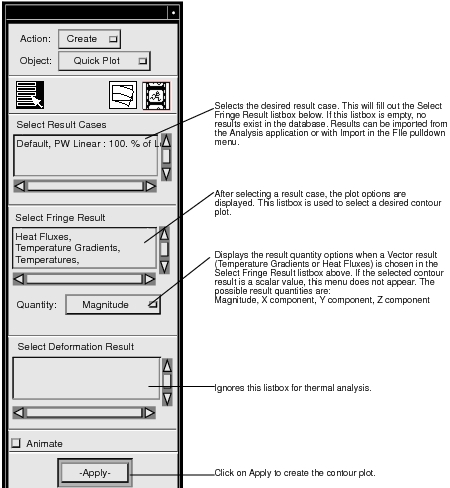
To create a contour plot:
1. Select the results case from the first listbox.
1. Select the fringe result from the second listbox.
1. If the fringe result is a vector quantity, select the scalar quantity (Magnitude, X component, Y component, or Z component) to be derived for the fringe.
1. Click on Apply.
Vector Output Definitions
Thermal vector results include temperature gradients and heat fluxes for conduction elements. Their result quantities are as follows:
Result Quantity | Temperature Gradients | Heat Fluxes |
Magnitude | {(dT/dx)2+ (dT/dy)2+ (dT/dz)2 } 1/2 | { qx2 + qy2 + qz2 } 1/2 |
X Component | dT/dx | qx = -k dT/dx |
Y Component | dT/dy | qy = -k dT/dy |
Z Component | dT/dz | qz = -k dT/dz |
The sign convention for heat flow is as follows. Positive heat flow takes place as energy is transferred from a region of high relative temperature to a region of low relative temperature. Similarly, heat flux into the surface of a body is a positive quantity.
For example,

XY Plots
In transient thermal analysis, XY plotting is frequently applied to track the temperature-time history of grid points. You select this capability from the Results application using the Graph object. You can also use the Fringe object and the Report object for advanced features of contour plots and text report generation.
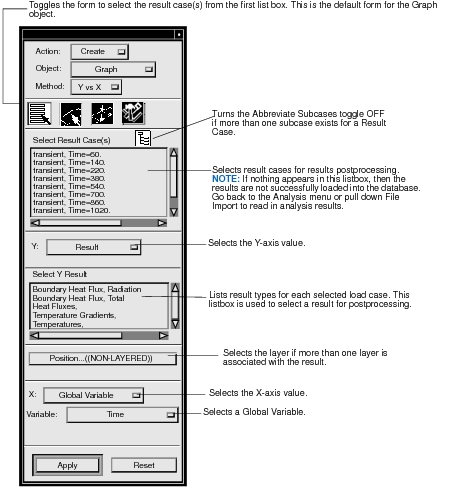
The Target Entities form shown below is used to select target entities.
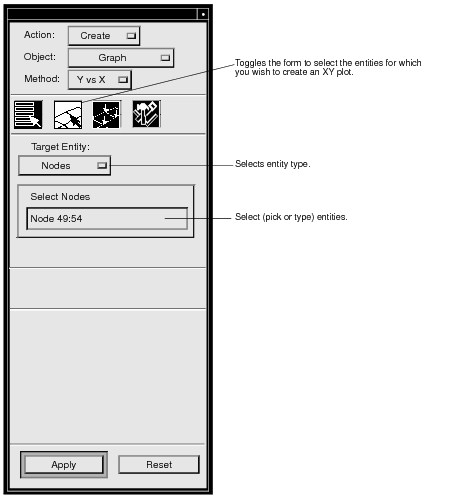
To create a fundamental XY plot of temperature versus time:
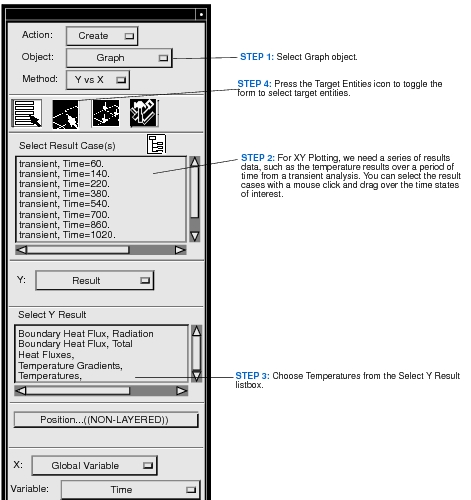
Delete an XY Window







